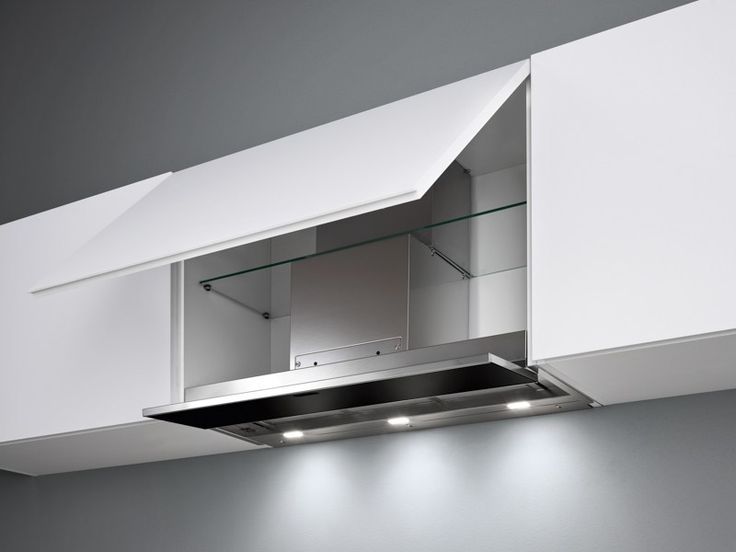When it comes to choosing the right chimney for your kitchen, two main options often come into play: ducted chimneys and ductless chimneys. Understanding the differences between these two types of chimneys can help you make an informed decision. Let’s explore the features, benefits, and considerations of both options, so you can choose the best chimney for your needs.
What Is a Ducted Chimney?
A ducted chimney is a type of kitchen ventilation system that works by pulling the air (including smoke, grease, and odors) through a filter and then expelling it outside through a duct. This mechanism ensures that all harmful particles and pollutants are released from your kitchen, leaving the air clean.
The process is quite straightforward: the chimney has a pipe that directs the extracted air to the outside of the house. It is effective in ensuring that smoke, odor, and moisture don’t linger in the kitchen. However, the installation of a ducted chimney requires a specific setup and proper ventilation pipes to direct the air outside.
What Is a Ductless Chimney?
A ductless chimney, on the other hand, operates differently. It has a carbon filter that traps the smoke and harmful pollutants, and then releases the clean air back into the kitchen. This type of chimney is more convenient as it doesn’t require an exhaust pipe or any external venting.
The carbon filter in a ductless chimney absorbs the smoke and impurities, which is then replaced after a certain period (usually 9 to 12 months) depending on the usage. While it doesn’t require as much installation work as a ducted chimney, it may need regular maintenance to ensure efficient performance.
Key Differences Between Ducted and Ductless Chimneys
- Cleaning Power
- Ducted Chimney: A high-quality ducted chimney with good suction power can clean the kitchen air by removing smoke, odors, and moisture. It is highly effective at improving the air quality.
- Ductless Chimney: While ductless chimneys are effective at filtering out smoke and particles, they are not as efficient at removing moisture and humidity.
- Noise Levels
- Ducted Chimney: The mechanism of a ducted chimney tends to be quieter since it uses external venting. However, this depends on the quality and power of the chimney.
- Ductless Chimney: Due to the additional filtration process (such as carbon filters), ductless chimneys can sometimes generate more noise during operation.
- Ease of Installation
- Ducted Chimney: Installation requires a proper exhaust system and often involves modifications like cutting through the wall to set up the duct. This can be more time-consuming and expensive.
- Ductless Chimney: Ductless chimneys are easy to install as they don’t require any external ducting. You can place them anywhere in the kitchen without worrying about venting.
- Cost
- In terms of price, ducted and ductless chimneys don’t have a significant price gap. However, ductless models are generally a bit cheaper due to the lack of external piping and installation complexity.
- Maintenance
- Ducted Chimney: Maintenance is minimal as long as the external duct is clear. You may need to clean the filters periodically to maintain efficient suction.
- Ductless Chimney: Requires more regular maintenance, as the carbon filters need to be replaced every 9–12 months to ensure effective filtration.
When Should You Choose a Ductless Chimney?
You might consider opting for a ductless chimney if:
- You live in a rented space or cannot make modifications to the walls.
- Your kitchen is located in a space where installing a vent or pipe is not feasible.
- You are looking for a simpler and more affordable option with less installation hassle.
When Should You Choose a Ducted Chimney?
A ducted chimney is ideal for you if:
- You want to ensure that all smoke, moisture, and pollutants are completely vented out of the kitchen.
- You have the space and means to install external piping.
- You prefer a long-term, high-performance solution for air purification in your kitchen.
Expert Advice for Choosing the Right Chimney
As a general rule of thumb, ducted chimneys are more effective for larger kitchens or those that frequently use strong cooking techniques like deep frying or grilling. The suction power of ducted chimneys ensures that even the heaviest smoke and odors are fully extracted from the kitchen.
However, if you are dealing with space constraints, or if you live in a rented house where you cannot alter the structure, ductless chimneys can still provide efficient air filtration with minimal installation hassle.
Pro Tip: When selecting any chimney, ensure it has a suction power of at least 500 cubic meters per hour. Anything less will not be effective in managing the smoke and grease. Also, always install the chimney at a height of around 28–32 inches above the gas stove for optimal performance.
Conclusion
Both ducted and ductless chimneys have their own set of advantages and disadvantages. If you have the space and are looking for a long-term solution to air purification in the kitchen, a ducted chimney might be the best choice. On the other hand, if you need an easy-to-install, low-maintenance option, a ductless chimney will work just fine.

